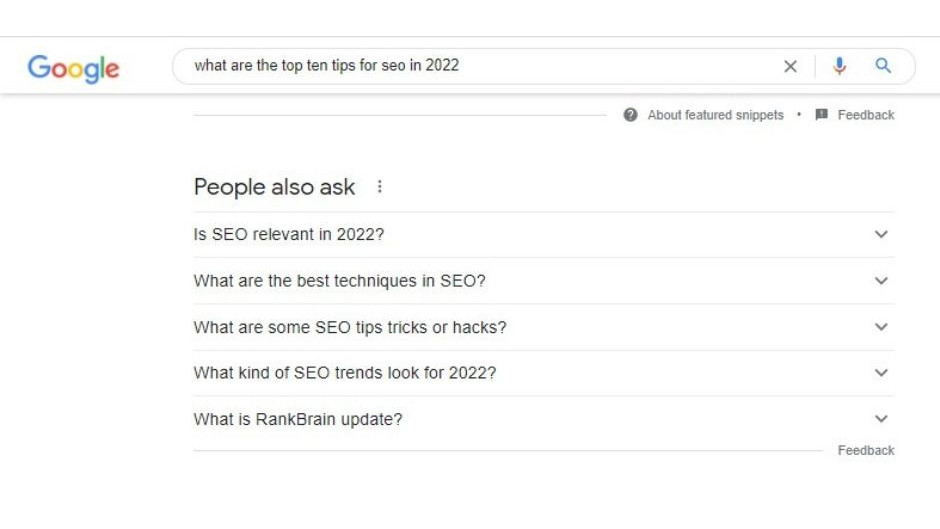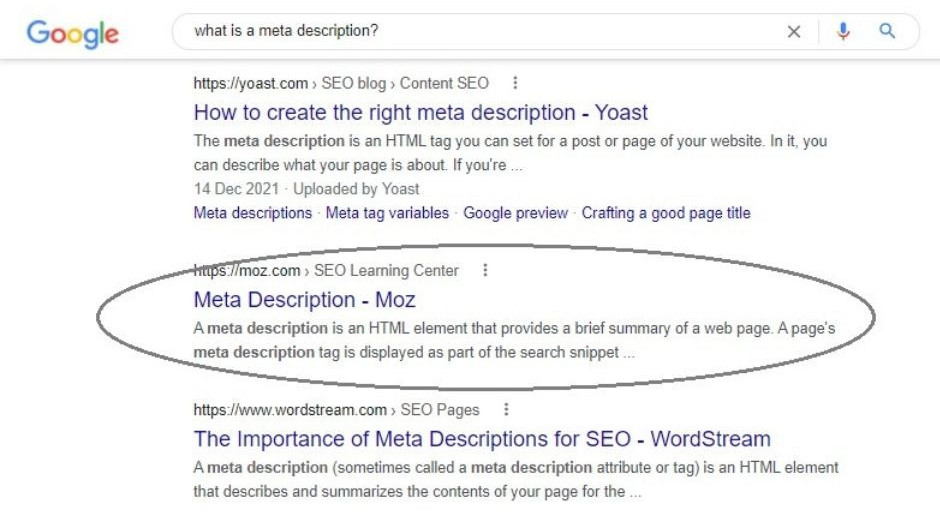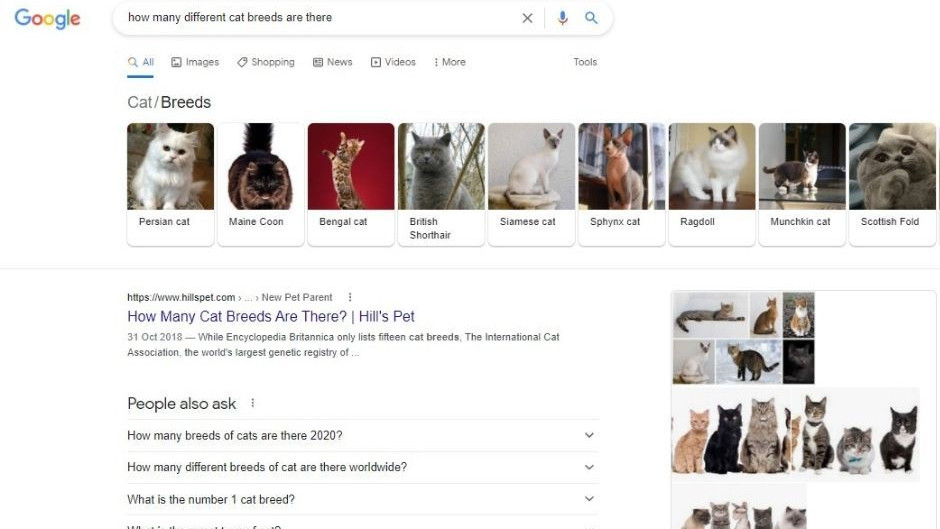Top Ten Tips For SEO In 2022

The SEO world is constantly changing, as every year sees algorithm updates rolled out to keep up with developing technology, changing search trends and evolving seeker behaviour. So, you might think your website is optimised and done, but the reality is, SEO is something you need to keep returning to time and again.
If you want your website to keep ranking in search engines such as Google or to start appearing in them, then it’s not good enough to rest on your laurels. At the very least, an annual review and update of your SEO strategy is required to keep your website at the forefront of algorithm changes.
So what does 2022 have in store for the SEO minded? Don’t worry, we’ve got your back. Have a read of our latest guest blog post, written by SEO expert, Rachel Weinhold of GrowTraffic, to find out the top ten tips for SEO in 2022.
What Changes Can I Make To My Website To Ensure SEO Success In 2022?
SEO can be confusing; we get it. No sooner have you learned one thing and the rules have changed. What was working 5 years ago is suddenly ‘illegal’. Yet your mate, who’s still using the same tactics as 10 years ago, seems to be flying up the rankings and getting tons of traffic. There’s no rhyme or reason to it. Or so it seems.
But after 10 years in the SEO business, I’ve got a fairly good idea of what’s required and what’s not. It’s my job to keep abreast of the latest search engine algorithm updates, so that you don’t have to.
So, if you want to boss your SEO game in 2022, these are the top ten SEO tips I recommend.
1. Review Your Keywords and Go Niche
Search engine algorithms have changed a lot recently and so have the results they’re giving us in the SERPs. As a result, the old strategy of going for the keywords with the highest search volumes might not necessarily continue to net you the high rankings it once did.
Yes, the high volumes of traffic might seem appealing but if those ‘big money shot’ keywords are actually too ambiguous or competitive, they won’t help you in the long run anyway.
Instead, you now need to focus more on finding your tribe; being specific and getting the right visitors to your website in the first place. The right visitors will stay longer, browse more, return again (all key ranking factors) and, most importantly, are more likely to convert, so they’re the ones you want.
So go niche with your keywords. Think long-tail. Don’t worry if the search volumes are low; there may not be hundreds of people searching for that precise thing, but those who are – they’re your people and you want them on your website. For example, if you’re business is within women’s fashion, don’t just target words like “fashion” or “women’s fashion” which will have a huge search volume. Instead, try targeting words like “ethical fashion”, “small business fashion” or “boho fashion”.
2. Think About Voice Search
As well as the search engines changing, the way we’re using them is changing too. We’re no longer typing one or two phrase searches into our laptops. Instead, we’re screaming random questions at our Alexa and Siri devices. We’re searching on the move. We’re asking more for advice. We’re using colloquial language and using apparently unrelated words.
As an example, instead of typing ‘what’s the weather forecast for Manchester on Wednesday?’, we’re asking ‘will I need a brolly tomorrow?’; we haven’t mentioned a ‘weather forecast’, we haven’t said where we are or specified when ‘tomorrow’ is, we haven’t even used the word ‘umbrella’, yet we expect our search engine to know what we mean. And it will.
So thinking about voice search is key when you’re writing the content for your website. Are you speaking the same language as your target audience? Are you asking and answering questions the way they would? Have you got a blog and FAQ section to fit more questions in? It’s really important you think about voice search when creating and optimising your web copy.
3. Question (And Answer) Your Content Calendar
I’ve already explained how important questions are, so is your content strategy asking and answering the questions your customers are likely to be putting into their search engines? Or are you just waffling on about the things you want to talk about, such as your latest accreditation or the recent conference you went to? I’m not saying that you don’t need a variety of content peppered throughout your content strategy, but the main bulk of it needs to be asking (and answering) the questions your customers are.
To do this, use the ‘People Also Ask’ section in the Google SERPs, and make sure you’re asking and answering those questions in your content:

Answer The Public is also an amazingly awesome tool to help you determine the questions you need to answer. And, of course, just ask your customers! Map your buyer journey and find out what questions they ask at each stage of the process, then make sure you’ve got the content to answer those queries on your website! For example, on our blog, we answer questions people have about building, maintaining and marketing their websites.
4. Optimise Your Meta Descriptions
Meta descriptions have long been a staple of on-page search engine optimisation, yet in recent years there’s been a lot of talk about whether or not they still matter. In fact, Google has been saying for over a decade that meta descriptions don’t actively contribute to rankings. So why do we still bother with them? It’s simple; they contribute to the user experience.
Meta descriptions are the little bits of information that appear in the search engine results (and when you share your web content on social media), so they are the first thing about you a potential visitor sees, and the thing that will determine whether or not they click through to your website.

5. Don’t Forget Your Schema Markup
Schema markup is where things start to get a little technical; but don’t panic! It’s not as complex as it sounds and this is the most technical we’re going to get in this post.
Essentially, schema markup is a little bit of code that goes on each page of your website and, in essence, it speaks to the search engine in its own language. It takes your complex jumble of human words and pictures and structures it in a way a search engine algorithm can understand, so there’s no ambiguity about what you’re saying with that web page and who you’re aiming it at.
In essence, schema markup is just filing your work correctly before you put it into the giant filing cabinet that is Google. You label your document clearly, so that the algorithms know where to store it so they can retrieve it quickly and know exactly who best to show it to. So, if you want the right visitors to be finding your website (which you do), then you need to be completing your schema markup.
Most SEO plugins will help you do this, if the functionality isn’t already built into your website’s CMS, so it’s not as hard as it first sounds. But, failing that, simply speak to your web developer or SEO agency (such as Grow Traffic), and they’ll be able to do it for you or show you how.
6. Optimise Your Images
This is another SEO staple, but well optimised images are becoming arguably more important now than ever before.
Partly, this is because the big search engines are committed to making the internet accessible to all, even the visually impaired. If you’re blind or visually impaired, then you’ll use a screen reader to access the internet: text is easy for these tools to read aloud, but images are often less so. Computers struggle to understand and interpret images conclusively, so they rely on us to tell them what images are of. And that’s where your image descriptions come in.
Of course, whilst search engines being able to understand images was important before, it’s even more so now. Particularly in this Instagram age – where everything is all about image – more and more people are searching in images these days. Think about the way you search; I’ll bet your ‘Image’ tab is more used now than it was a couple of years ago?!
The latest algorithm updates have recognised this and acted on it, so images are as important an aspect of the search engine rankings as words. Do some searches now in Google and you’ll see just how prominent images are in the revamped search engine results page. This recent search I did on cats illustrates it perfectly;

So, if you weren’t optimising your images before, now is the time to start. Make sure every single image has a unique image description; describe the actual picture as though you were reading it to a blind person (because you are!) and don’t forget to type out verbatim any text in the image. Brownie points for getting your keywords in there!
One final word on images; image titles (or file names) are become more and more crucial in SEO now too, so make sure you name your image something sensible, relevant and unique before uploading it to your website: no more ‘camera_roll_1234567’, instead, go for a logical naming convention like ‘businessname_keyword_image’. Again, you’ve got to get that keyword in there! For example, if you’re targeting a keyword like “ethical fashion” you would name your image “businessname_ethicalfashion_image”.
7. Make Everything Faster
It’s another top tip that’s not new, but if you haven’t already got your website as Speedy Gonzales as possible, do it now. Right now.
In 2022, ain’t nobody got time for waiting for slow websites to load. You have literally milliseconds and, if it’s not all there, neither are your visitors. Patience might be a virtue, but we’re an unvirtuous lot these days. And the search engines know it. They have to provide a great search experience to their end-user, so there’s no way on earth they’re going to bump you up the rankings if your website is slow.
So, speak to your web developer and make sure you’re doing everything you can to speed up that website. Compress your images, remove excess code, change your hosting; whatever you need to do, do it. Or you’ll face the consequences in vanishing rankings and diminishing traffic. Pagio Website Builder handles most of this but you are in charge of your image file size, so reduce these as much as possible. If you need help with this, you can check out Part 1 and Part 2 of our image resizing guide.
8. Think About The Design And Layout Of Your Website (Yes, It’s Core Web Vitals!)
I’m not going to go into core web vitals now and what it’s all about, but suffice it to say, if you don’t have a smooth, clean website that’s easy to use and loads fast, you’re done for. Gone are the days when pop-ups would be tolerated, or music starts playing, or videos start loading. We’re no longer putting up with pages where all the content moves around as it loads, the layout changes, or things flicker in and out of vision.
We want websites that load fast, are predictable, and we can start using them in seconds. Yes, I know, it’s boring and leads to lots of same-y websites, but as an end user, that’s actually what we want from a website. We know how to use them, we just want to be to find what we want quickly and navigate around easily.
So, if you’ve still got an email pop up box on your website, ditch it. If you’ve got elements that flash around or move, halt them. Again, make it quick, make it sleek and make it really, really easy to use. And if you don’t know how to do that, your web developer will.
9. Review Your Backlink Strategy
Ah, remember in the good old days when you could just buy your backlinks? Thousands of them for just a few quid. Well those days are no more. Now, it’s about quality over quantity.
Not only do your backlinks need to be genuine and organic (as much as humanly possible), they also need to be good. Yes, domain authority (DA) still matters, but now it’s more about getting that recommendation from a reliable source, someone who really does know whether or not the stuff you’re saying on your website is gold dust or tripe.
Essentially, a backlink from The Guardian is good (DA of 89, trusted source etc.), but a backlink from a lower DA website in your sector or industry is far better. For GrowTraffic, for example, a backlink from the BBC would be amazing, with their DA of 90, but a backlink from SEOptimer (DA 56) would be better, because they’re better placed to comment on the quality of our SEO content.
So, if you haven’t taken a look at your backlink profile for a while, do it now; Moz has a free tool to get you started. Spend a bit of time cleaning it up by removing any spammy or broken links, making sure you have a good mix of dofollow and nofollow links, and look for a good variety in terms of DA and sector. If you need to improve your backlink profile, then carry out some organic backlink building and try to secure some good quality industry articles. If you can tie this is with your PR strategy, even better!
10. Become A Trusted Author
These days, it’s not enough to simply focus on your own website and expect to rank well. There are billions of websites doing that; it just doesn’t cut the mustard any more. Instead, you have to prove that you are an expert in your field and know what you are talking about. That in turns makes the content on your website seem more trustworthy.
Take business owner A, for example: Mr Bootsy. Mr Bootsy writes a monthly blog on his website about his business. He ranks for certain keywords and gets some traffic. Business owner B, on the other hand – Ms Snudge – she writes a WEEKLY blog about her business and her industry, but she also posts on LinkedIn about that sector, she writes guest blogs for other expert websites in the sector, she tweets with industry specialists about the latest developments in her sector, she review books about her sector, she does a monthly podcast and hosts a Facebook Live regularly. In short, Ms Snudge is ALL OVER the internet talking about her specialist subject: her business sector.
Which one do you think Google is going to trust more as an industry expert, and therefore return higher in the SERPs? That’s right: Ms Snudge is getting all the rankings. Clever indeed.
So, if you want your business’ website to rank and be visible to more potential customers, you’re going to have to put the leg work in and make sure you’re professing your expertise in multiple places. That means guest blogging, podcasting, being a keynote speaker, getting active on social media – whatever it takes.
What Changes Should I Make Today To Improve My Website’s SEO?
I’ve given you ten top tips to improve your SEO, but it’s not the case that you have to start working on all of them right away. In fact, it’s highly unlikely you’ll be able to. So don’t feel overwhelmed! SEO is all about prioritising what will really make a difference and going at it a bit at a time. It’s about doing a cost-benefit analysis and making it manageable.
So take a look at your website now. Which of the above ten points do you think you’re most lacking in? Which will give you the most bang for your buck for your specific website? Start there.
If you have a lot of things wrong, start by prioritising the pages on your website with the most traffic – your best-performing pages – and work outwards from there.
If it is genuinely all too over-facing, then either make a vow to start from now or – better still – get in the experts to do it for you!
Want To Improve Your Website’s SEO For 2022?
Of course you do. According to KPMG’s statistics for online business in the UK in 2022;
“55% of people will search online for reviews and recommendations before making a purchase, with 47% visiting the company website, 26% checking out the physical store, and 23% of people talking with friends and family.”
Essentially, if your business doesn’t have a good web presence – and isn’t findable in search engine results – you can bet your bottom dollar your competitors are, and they’re getting all those potentials customers right now.
If you’d like to chat to an SEO expert, then you can contact me, Rachel Weinhold, at rw@growtraffic.co.uk for a no-obligation chat. You can also visit our website at: https://www.growtraffic.co.uk/
If you want to do your own SEO, visit Swift Rank and run a free SEO report.
Need a professional website that is easy to manage?
Sign up or book a free 30 minute website consultation with one of our team who can demo Pagio Website Builder and answer any questions you have.
